Despite the post-COVID boom for online shopping, the eCommerce landscape is more difficult than ever before. Intense competition, both from big players like Amazon or other growing DTC brands, has driven up ad costs, forced brands to lower prices, and overall lowered ROAS.
However, difficult does not mean impossible. Experience has given us some perspective in growing eCommerce brands. While occasionally some new tactic or channel can provide a short term boost, developing a long term eCommerce growth marketing strategy will always come down to mastering the fundamentals.
1. Guide Your Prospects Down the Funnel – Email Marketing
While many brands are jumping from one new shiny tool to the next, email marketing remains arguably the most effective among long term growth strategy. More than 55% of marketers say their strongest ROI comes from email, and that ROI averages a return of $42 for every $1 spent! Email marketing has so many vital tactics and best practices that it could easily be its own blog post, but there are two primary strategies when it comes to email marketing.
Trigger Emails – These are pretty self-explanatory, as they’re email sent as a result of the user taking a specific action. An optimized email flow will have multiple triggers, where customers can fall into multiple segments, allowing you both multiple touchpoints, as well as the ability to test what offers and messaging work best.
- Welcome – After someone joins your email list, it’s a standard best practice to send an onboarding email to verify the user’s email address, as well as help new leads or customers get introduced to your brand or product. Welcome emails should also be the start of a drip campaign: a series of messages optimized to drive users towards your primary KPI, which in this case is most likely completing their first purchase from your online store.
- Transactional – Triggered after the user makes a purchase, these emails confirm the transaction details and set expectations about the next steps. Another best practice is to prompt users to leave a (hopefully positive) review of your product.
- Abandoned Cart – Users adding items to their shopping cart and leaving the site before completing the purchase is all too common in eCommerce. These trigger emails can be a nudge to remind the user, or at the very least, stay top of mind. Adding an item to a shopping cart is an obvious indicator of buyer intent, so you don’t want to miss this opportunity.
- Milestones – These can be used to help build relationships with your customers by celebrating things like birthdays, join date anniversaries, or milestones for how much they’ve used your product. These emails can also be a great excuse to extend an offer, such as a discount code.

Marketing Emails – The primary reason that having a customer’s email is so valuable is it gives you the ability to engage them whenever you want. Of course, you don’t want to abuse this permission, but properly executing strategy and tactics here is a crucial lever to growing your online store.
- Product Launches – Your biggest fans are going to be subscribed to your email list, so they’re likely to be the most interested in your new product launches. Please don’t make the mistake of assuming they’ll find out on their own. Build excitement for your launches with teaser emails, then let them know as soon as the new products are available for purchase. You can even try rewarding your loyal customers by giving them early access to buy!
- Promotions/Sales – In addition to your core audience, a large portion of your email list is potential customers who are interested in your brand, but haven’t yet made their first purchase. Your email list is the perfect place to inform them of flash sales and other short term offers to drive them to their first purchase. While a full drip campaign probably isn’t necessary, informing them of the sale and following up with a “last chance” email towards the end can be an extremely effective tactic.
- Content – If your online store utilizes a blog as part of its marketing strategy (see next section), sending the occasional update to your email list is a great way to continue providing value to your customer base. The most common approach here will be content that helps your customers get the most out of their purchased products. For example, a food brand could send out recipes on dishes to make with their ingredients, or a brand that makes fitness equipment could provide workout routines. You don’t want to overdo it here, as flooding someone’s inbox will almost certainly result in more people unsubscribing, but keeping a regular schedule will help keep you top of mind for when they are ready to buy.
2. Help Your Customers Find You and Make Decisions – SEO & Content Marketing
When 88% of consumers are conducting an online search before making a purchase, and most searches are not making it past page one (with a rising number of zero-click), SEO is another eCommerce growth strategy that’s impossible for marketers to ignore. Again, SEO is such an in-depth topic that it could easily fill its own blog, but here are some highly relevant examples for eComm growth.
Blogs – Even if you perfectly optimize all your product pages for their particular keywords, there will still be many relevant search inquiries that you want your business to rank for. That’s where a blog comes in. If your product pages are designed to rank for people searching for those specific products, your blog pages should be designed to answer questions about your product or industry.
For example, clothing retailer Stitch Fix creates style guides to help people choose outfits for each season, wear certain items, or dress for specific events. If the page is optimized correctly and ranks for “How Your Shirt Should Fit,” a potential customer will navigate to the page for the info they’re looking for, then find links to their products that fit their style.
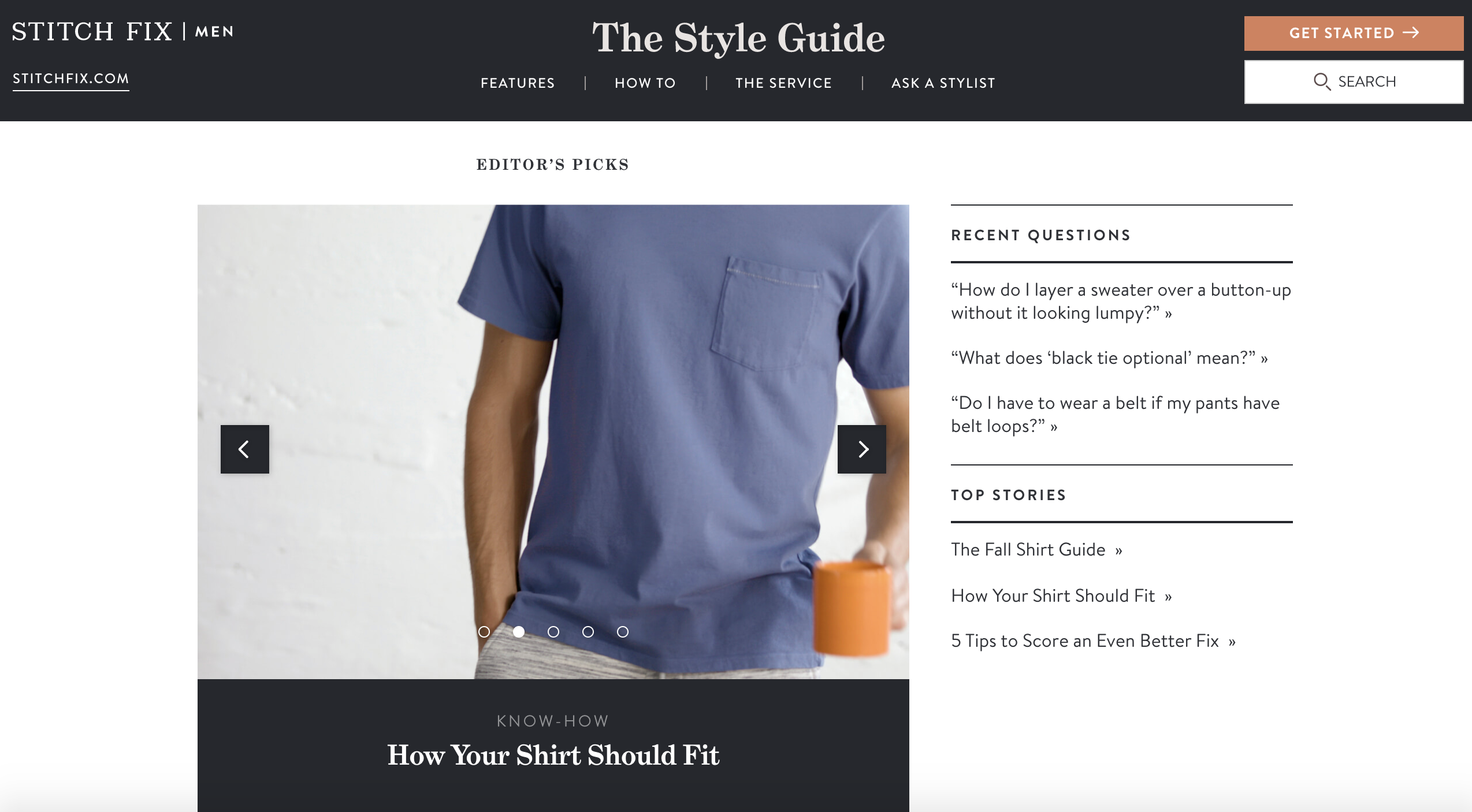
Quizzes – As entertaining as Buzzfeed can be, those aren’t the type of quizzes we’re referring to here. Unlike discovering which Disney character is your spirit animal, quizzes can be utilized to educate users about your products, offer personalized solutions, and incentivize users to complete a lead form.
One example of this is Remrise, an eCommerce brand that offers a variety of herbal and natural sleep supplements. Because their solutions differ based on the different causes of poor sleep, Remrise created a simple 2-minute quiz to identify your personal issues and recommend the ideal sleep formula to help.
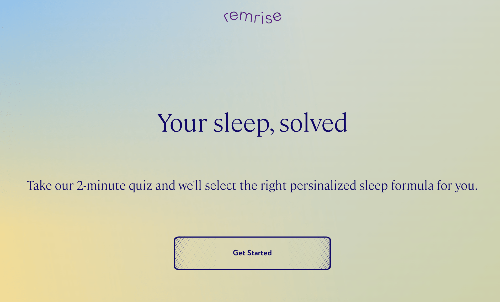
Shopping Listings – Listings have been a major part of brick-and-mortor business for a long time (Yelp, TripAdvisor, etc.), but they’re starting to work their way into eCommerce now. In April 2020, Google announced that its Shopping listings were no longer just for paid ads, and Facebook Marketplace soon followed. These listings offer a free place for additional exposure and sales, but similar to SEO, they have their own set of rules and best practices that you can optimize to improve your rank and drive traffic.
After setting up your product feed, test different headlines, images, and descriptions. Attach reviews or promotions to drive additional social proof and attention. Because these listings are free, they’re also very competitive. Regular maintenance and optimization are required to outrank your competition, but the payoff can be substantial.
3. Be Where Your Customers Are – Social Media Ads
Social media has become so ubiquitous with digital marketing that we can skip a lot of the usage stats and agree that it’s among the most essential eCommerce growth strategies. But just in case, 54% of social browsers use social media to research products, and 50% of Gen Z and 42% of millennials say that social media is the most relevant advertising channel. It’s safe to say that social media is likely a fit for just about any eComm business, so let’s look into a few areas where it shines the most.
Audiences – Facebook and Instagram collect the most data, and therefore, can offer what is probably the most precise targeting we have available.
- The lookalike audience is the simplest, most effective way for most businesses to scale. You don’t need to worry about making incorrect assumptions about your core audience. Just upload your customer email list and use the Facebook AI to target demographically and behaviourally similar people. Be sure to regularly refresh these audiences because your audience will change and develop as your online store continues to grow.
- However, while running lookalikes will likely produce your most reliable ROI, you run the risk of data bias by continuing to target and convert similar looking people. You need to test wider audiences to continue learning about which people are most likely to convert into customers. The Facebook Audience Insights tool is a great way to get a high-level overview of the types of things your followers are interested in. Another area worth testing is targeting people who have recently gone through specific life events – starting/graduating college, engagement/marriage, buying a home/moving. Major life events often trigger new purchasing behavior, so if your product is particularly useful to someone in this situation, these audiences can be a gold mine.
Ad Types – As with any business growth strategy, testing to find the right ad combination is a must. But when it comes to eCommerce sales, there are a few ad types that stand out.
- Unlike SaaS companies or service-based businesses, an eCommerce brand often relies on visual elements to sell products. The Facebook carousel is a particularly valuable format, as it enables you to feature multiple products and allows the user to go directly to the product page of the item that most appeals to them. Similarly, video stands out as a strong ad type for eCommerce growth, as it still features those visual elements while allowing the ability to tell your brand story a bit more.
- Being able to complete a transaction without making the user leave the app drastically reduces the likelihood they’ll abandon the sale. So naturally, Facebook/Instagram, Pinterest, Snapchat, and even TikTok have been experimenting with and releasing various shoppable ads, where retailers can feature specific products in a way that facilitates seamless transactions.
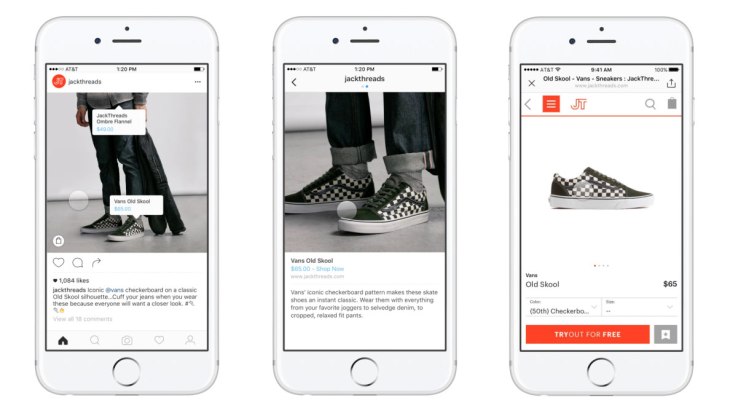
4. Reach Customers In Moments That Matter – Paid Search & PPC
Alongside paid social, paid search is another must-have eCommerce growth tactic. One of the more significant challenges of paid advertising is trying to get in front of your audience at the micro-moment they’re looking to make a decision. It doesn’t get much simpler than bidding for the top spot when someone is actively searching for something where your product is a solution.
High Intent Search Keywords – While it may be tempting to include any word or phrase associated with your business, that’s also the fastest way to burn through your entire ad budget. The more niche you can get, the more qualified your leads will be. Say you’re an online retailer that sells custom jewelry. Bidding for the keyword “jewelry” isn’t going to bring you the most qualified traffic, as that person could be in the research phase of their buying journey. On the other hand, bidding for the keyword “buy custom jewelry online” will drive a lot more high intent traffic, as that person is clearly looking to purchase. Results will be more efficient the more qualifiers you can add, so you can specify things like type (necklace, rings), material (gold, turquoise), and so on.
Shopping Ads – Google Shopping ads generated 85.3% of all clicks on AdWords and Google Shopping campaign ads and accounted for 76% of retail search ad spending. One of the reasons they’re so popular and effective is their positioning. On mobile, Google Shopping ads appear in a carousel on top of the SERP. On a desktop, these ads are shown in a grid on the right side of the page. Their prominent positioning, combined with them being obviously much more visually stimulating, make them an essential part of any eCommerce growth strategy.
5. Don’t Let Them Forget About You – Retargeting
While the effectiveness of display advertising is an intensely debated topic among marketers, there’s no question that there’s value in staying top of mind among your audiences most likely to convert. When someone has come to your site and viewed specific products, it’s safe to assume they’re in the market for what you’re selling. In that case, reach them any way that you can.
Product Ads – If you go to Zappos and look at a specific pair of shoes, odds are you’re going to continue seeing ads for that shoe for the next few days. Why? Because Zappos knows that you’re likely looking to purchase new shoes and knows the exact style you like. While some users might find these ads annoying at times, there’s a reason brands continue to use them – they work. Retargeting audiences across the board will show higher click and conversion metrics when compared to targeting new audiences. It’s a pretty common behavior for someone to begin browsing before they’re ready to buy, re-targeting ensures that your products are top of mind when they finally are ready. Facebook and Google are great places to start for retargeting, but there are other solutions like Criteo or AdRoll that can specialize in retargeting across multiple platforms.
Cart Abandoners – While it’s pretty rare to see someone go to a physical store, fill up a shopping cart, then just ditch the cart and decide not to buy anything, it’s almost shockingly common in the eCommerce space. Cart abandonment rate tends to vary between 60-80%, with the industry average at 69.57%. As mentioned above, it’s common for users to browse and price shop and even add things to carts to save for later when they’re ready to buy. To a large extent, cart abandonment is unavoidable, no matter how good your products are or how optimized your site is. However, retargeting is among the best ways to combat this. If the user is far enough along in the checkout process that their email address has been collected, follow up emails are a powerful way to close the loop. Cart abandonment emails have an open rate of 46.1%, a 13.3% CTR, and a conversion rate higher than 35%!
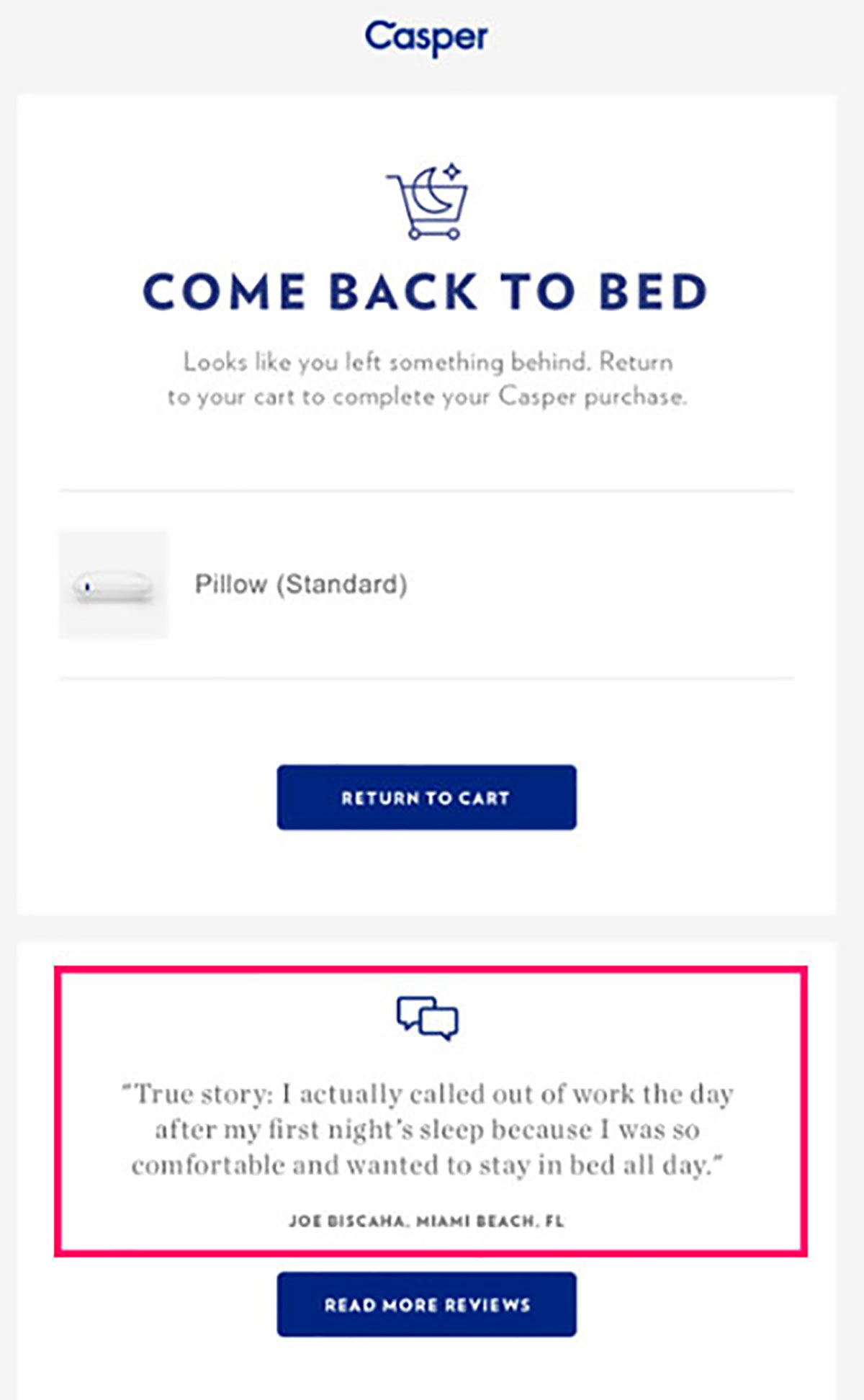
6. Leverage Your Customers – Referral Marketing
The history of growth hacking is filled with examples of companies that achieved massive growth via referral marketing. While their tactics have been replicated by brands many times over, referral marketing is still an essential channel for many brands, particularly ones that may lack the budget and resources for paid marketing campaigns. Similar to going viral, referrals beget more referrals, driving growth that compounds over time with little to no additional work or resources.
Create a product worth referring – The most obvious point here is also the most difficult, but it’s worth mentioning because of its importance. Before you offer an incentive, are people already inviting their friends? Are there any active communities (Reddit, Facebook Groups) where users are discussing your product?
Build referrals into your product – Robinhood offers free stock to both the existing and new customers. Seamless offers purchase credits to both you and the friend you’re inviting. One of the reasons these examples are so effective is that the rewards are incredibly relevant to the user base. Anyone on Robinhood is looking to build an investment portfolio, so offering free stock is going to be highly coveted (they also get a boost from the fact that the actual stock isn’t known in advance, creating a variable reward). Seamless is a platform where people are actively spending money, so offering monetary credits is such a native/natural fit that it doesn’t even seem like marketing.
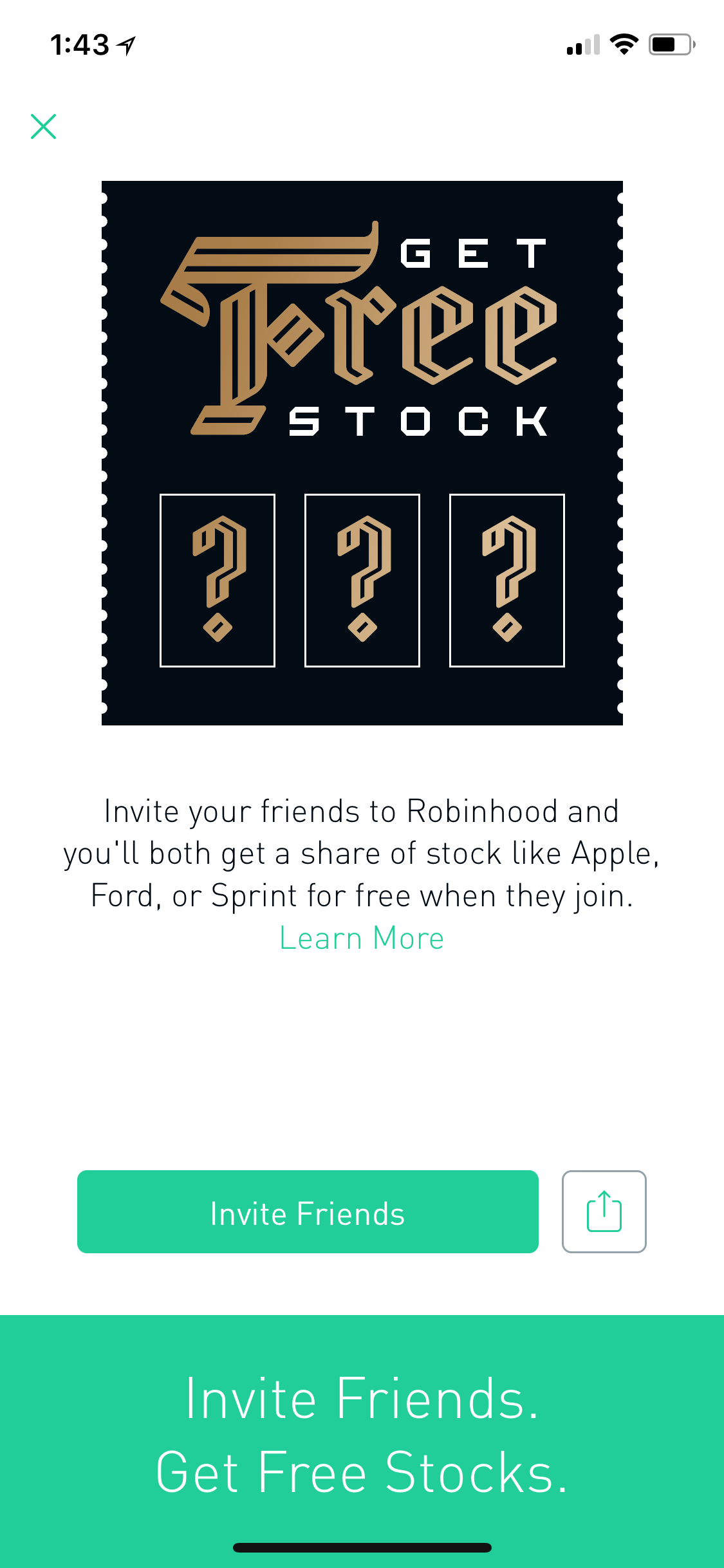
Cost-effective rewards – Another reason the above examples are so effective is that the real cost of the rewards is minimal to the business. Seamless is willing to take a small hit on the first order because they know that their app is so easy and practical that it will often become a regular part of a customer’s routine. On the other hand, Robinhood has some upfront costs to endure, given that they need to buy and gift an actual stock. However, the cost of that is ultimately minimal compared to the estimated CAC of driving someone through the full acquisition funnel via paid ads. Robinhood also benefits from a high LTV. Therefore, a company like theirs can afford to pay a little extra upfront, knowing they earn that back and more in the future.
7. Build A Team To Help Promote Your Products – Affiliate Marketing
Affiliate marketing is a proven and effective eCommerce strategy for expanding the reach and, ultimately, sales by connecting businesses with marketers who can sell their products. This strategy is also considerably lower risk than many others on this list, as affiliates are performance-based. Therefore, the business is only paying when their affiliates actually deliver sales.
Affiliate Marketing Tools – Affiliate marketing tools essentially play the middleman between you and a network of affiliates that are looking to sell products. Amazon is the biggest and most famous example, but others like ClickBank or Rakuten also work for certain types of products. Once connected to a network, you decide the commission percentage you’re willing to offer. Many eCommerce platforms will start with a high commission to incentivize early affiliates to get the product out there, then draw back a bit as your products have more brand awareness and can sell themselves better. Since these commissions are only paid after a sale, you can determine your ideal commission by looking at the cost of goods sold and your mandatory profit margin to see what you can pay out to ensure a strong ROI.
Influencers – While many consumers have developed a distaste for influencers, you can’t deny their effectiveness, as influencer marketing has grown into a multi-billion dollar industry. While some networks out there can help connect businesses to relevant influencers, often, the best strategy is to research popular people within your niche and connect with them directly. The most significant difference between influencers and the tools listed above is how they’re paid. While some influencers work very similarly to the marketing tools above (getting commissions for every product sold), some demand a flat fee for promotion, while others simply want free products. Influencers require a bit more of a personal touch, so keep in mind your pricing structure and goals when deciding how and who to work within the influencer space.
Takeaway
There’s a wealth of strategies and channels that can be utilized to drive online sales, and with technological advancements, the complexity of eCommerce marketing will only continue to grow. While the shiny new social network may look tempting, make sure you’ve got the fundamental eCommerce growth strategies covered first, and you’ll be well on your way to sustainable business growth.
Interested to learn more about how to grow an online business? Check out our guide to performance marketing for eCommerce to learn all the steps you need to launch.







Thanks for sharing effective information about the e-commerce digital marketing strategy. This article helps me to increase sales on my site. Nice article!!
This is a great deep dive into e-commerce marketing – Especially as the number of people shopping online has increases astronomically over the last few months!